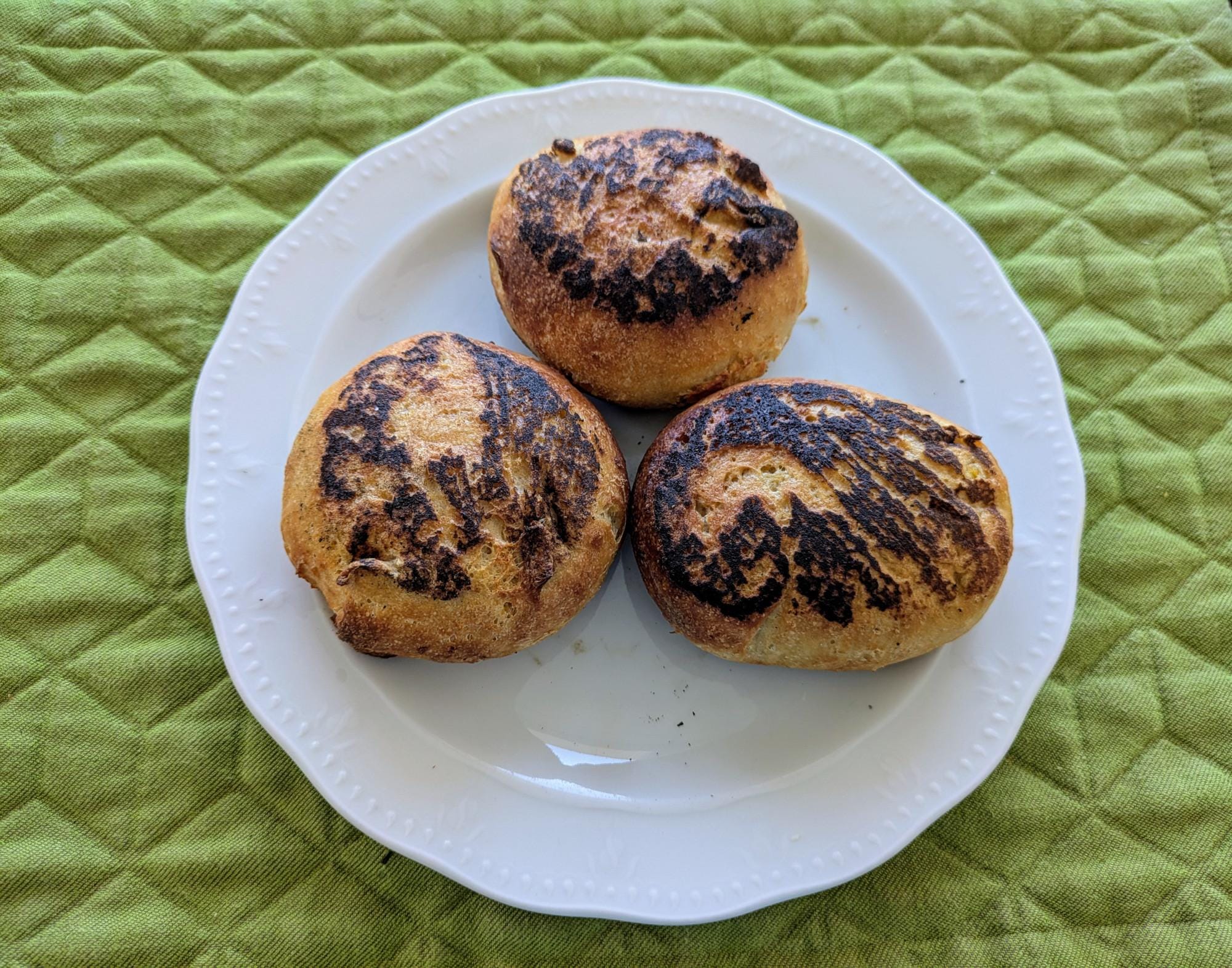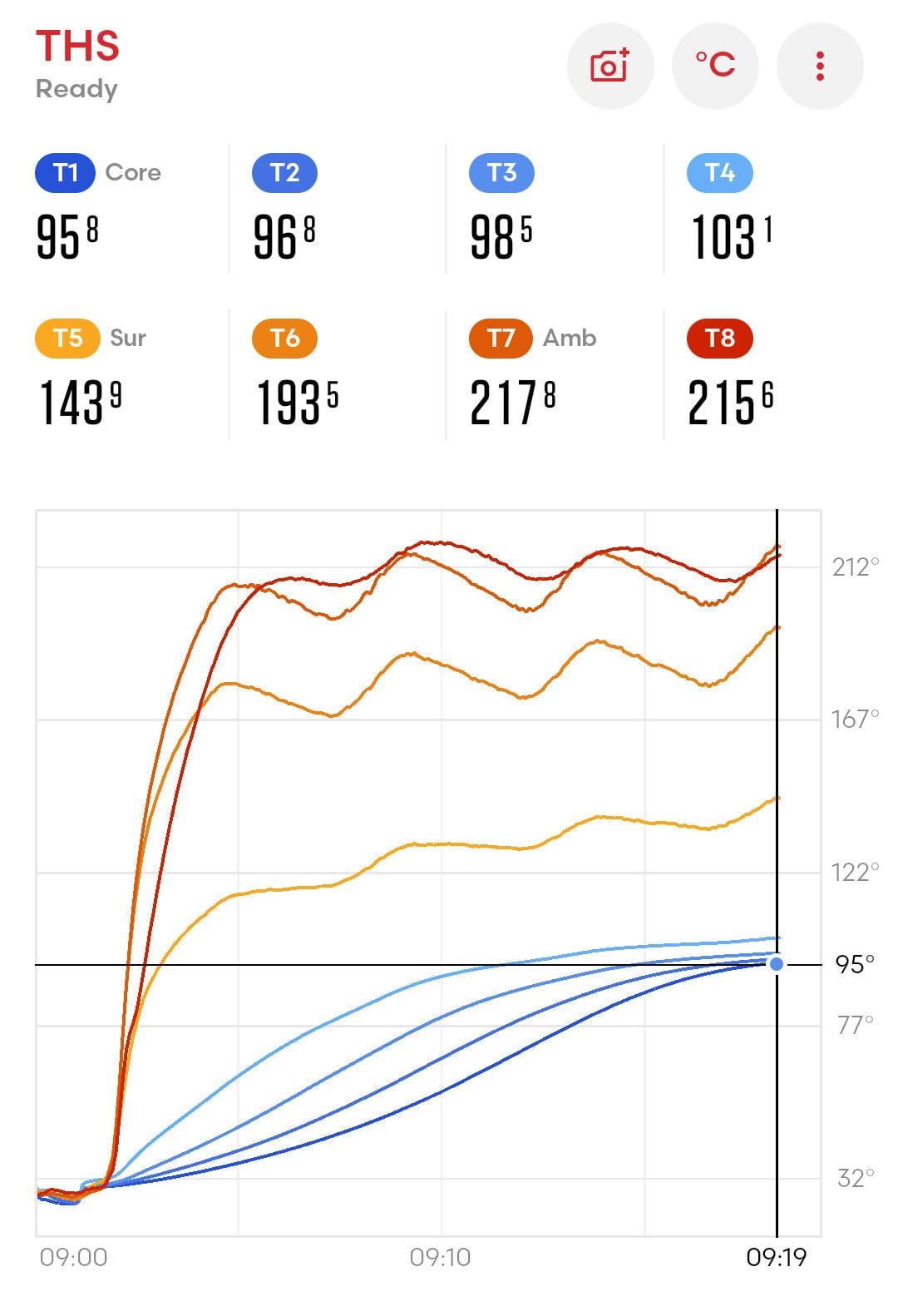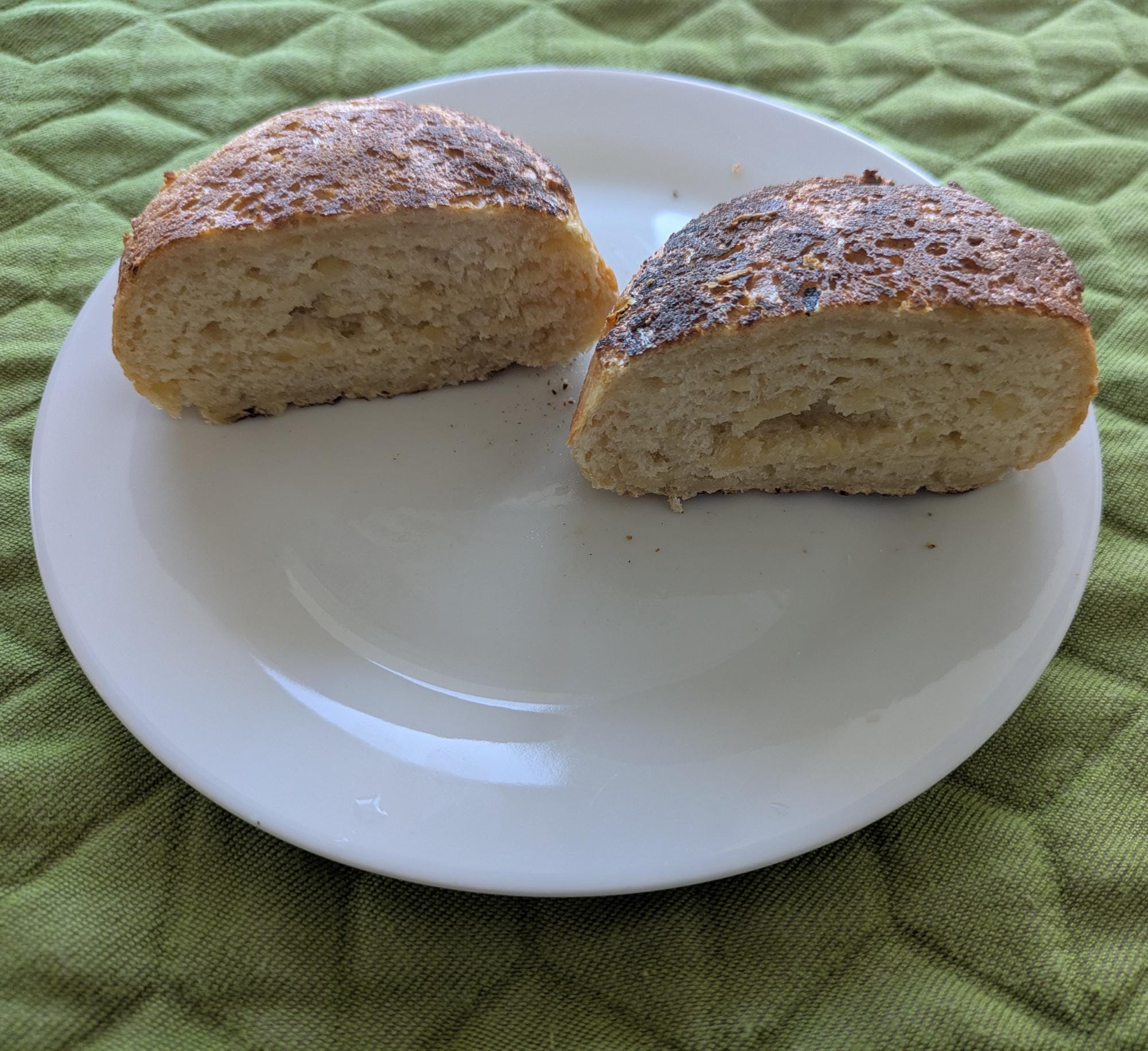Fermented Potato Bread continued

After more than three weeks, I now have a new batch of fermented potatoes ready to use. This is my finalised potato bread recipe, developed through experimentation and me trying to replicate the one from Amass. The main difference is the addition of yeast to the dough to give it a more bead roll-like texture.
Recipe
Be warned this recipe takes at least a week to complete if not closer to three. The process is similar to the one described in part one of this series.
Ingredients
- 290g fermented potatoes with 2% salt (used mealy potatoes)
- 450g flour (type 550)
- 175g yogurt (3,5% fat)
- 8g salt (this is extra to the one used for fermentation)
- 3g yeast
I've scaled the recipe up and down depending on how many fermented potatoes there are, and it seems to work quite well. So adjust as necessary.
Material
- vacuum bags and sealer
- fermentation chamber (or a hot apartment)
- scale (ideally one that is accurate to 0,01g)
- kitchen towel
- baking tray and rack
- (optional) thermometer
Step 1: Boil and prep the potatoes
Boil the potatoes whole until they are very soft. Leave them to cool slightly, then peel them. Its a good idea to boil a few more than you need for the recipe.
Step 2: Fermentation
To ferment them, mix the potatoes with 2% salt, then seal them in a vacuum bag. The original recipe says to ferment at a temperature of at least 30°C for a minimum of 10 days. However, as it was so hot here (24-32°C in my apartment), I decided to ferment them at room temperature for a total of three weeks. It was definitely more sour and slightly yeasty compared to the one-week batch, but not in a bad way.
Step 3: Mash potatoes in the bag
I wanted to make this recipe without using my stand mixer, so I found the simplest way to get an even distribution of potatoes in the dough was to mash them up by hand while they were still in the bag. Alternatively, you could use a potato ricer or pass them through a sieve.
Step 4: Making the dough
Mix the flour, salt, yeast, yoghurt and fermented potatoes together. Knead until you have a relatively smooth dough.
Step 5: Overnight fermentation
Place the dough in a bowl with a lid and leave it to rest for around 8 hours at a temperature of 24°C. Probably a shorter time is fine, but this makes it more convenient.
Step 6: Shaping and resting
Shape the dough into 160g balls (you should get five from the above recipe). Place them on an oiled tray and cover with a damp cloth. Leave to rest for around an hour at 24°C.
Step 7: Dry fry
Heat up a cast iron pan, but not on full blast, otherwise the dough will burn before you can flip it. On my stove, I found that around 2/3 of the heat was just right. I should get an infrared thermometer at some point.
Place the dough ball in the pan and press it down to a thickness of around 2.5-3cm using a spatula. Let it fry until it is lightly charred, then flip it over. Continue with the rest of the dough, placing the pieces on baking paper to easily transfer them later to the oven.
Step 8: Bake
Place the fried dough on a baking rack in the oven and bake at around 200°C with convection for 15 to 20 minutes.

Done!

Notes
- Although the bread tastes nice when it is warm, it is best to leave it to cool for a while, otherwise the crumb will be a bit gummy and stick together.
- It seems that the fermented potatoes keep well in the fridge for a few days.
- When using them as normal bread rolls, I didn't find it necessary to brush them with melted butter, but I would need to do more side-by-side comparisons to be sure.
- The bread keeps well without major signs of going stale for at least a day, but I haven't tried keeping it for longer than that. Freezing also works nicely. In the future, I might do a side-by-side comparison with and without dough conditioners to see if I can extend the shelf life a bit longer.
Work in Progress Onion Variant
I tried using this process to adapt the recipe for the potato and onion bread, using some of the fermented potatoes. To do this I added around 30g of fried onions to the recipe above and then made it as normal. Frying and nearly charring the bread adds a nice flavour, but in this case, it clashes with the fried onions as there are too many roasted flavour notes. Furthermore, the onions overpowered any fermented potato flavour. I might try using caramelised onions instead in the future.
I'll leave you to probably my most cited childhood cooking sketch:


